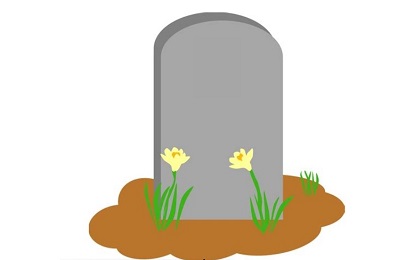How to Find Your Ancestor's Burial Location
Tips for finding out which cemetery your U.S. ancestor was buried in so that you can view their headstone

Finding a burial location for your ancestor is helpful because often there is a headstone at that location which may list information about the person buried there such as name, death date, birth date, or other details. Looking at the nearby headstones can also give clues about who the family members of the individual were. In addition, if you know where your ancestor is buried you can go and visit their burial place in person.
There is sometimes the possibility that your ancestor's headstone will no longer be available. Sometimes cemeteries are moved and headstones are lost, people were sometimes buried on private property and the headstone may no longer be there. Sometimes with the passing of time the headstone may no longer be readable, or a person may have been cremated and no headstone was made. However, it can be a great experience to see your ancestor's headstone and always worth the time searching for one.
Here are some ways to find out where your ancestor was buried.
1. Look for an online headstone image
We have an extensive records directory where we list online cemetery and other records that can help you find your ancestor's burial location. Look for the state and county that you need, and then select Cemetery Records to find those records specific to the area in which you are looking.
Another large site with many cemetery images that is searchable is FindaGrave.com. Keep in mind when using Find a Grave that though the information from the tombstone images is usually reliable, other information on the page for your ancestor may or may not be correct. Information is user submitted and there are errors at times just as there are in online trees or other sources of information.
2. Look for your ancestor's death certificate
If there was a death certificate recorded for your ancestor's death it will often list the burial location of the deceased. To find death certificates that are online, go to our records directory.
Not all death certificates are currently online, particularly for those that are more recent. The state department of health often keeps copies of more recent death certificates and you can obtain a copy for a fee. The FamilySearch wiki can help you to know when death certificates were first recorded in the state you are looking for as well as how to obtain a copy.
3. Look for your ancestor's obituary
An obituary often lists where someone is buried. For help locating an obituary, see our article on How to Find an Obituary for Your Ancestor
4. Contact the local public library, genealogical society, or historical society
The local public library or a local genealogical or historical society in the area that your ancestor died may have local resources not found online that they can check for you.
If you are confident your ancestor was buried in a particular location but you don't see a headstone image online, you could try contacting the cemetery office to see if they have any additional records that can be searched.
Happy hunting!
Need help finding more records? We have genealogy research services available. You can also try our genealogical records directory which has more than 1.3 million sources to help you more easily locate the available records.
Related Topics
- Learning Genealogy Articles more than 140 helpful articles to help you to do genealogy more effectively
- How to Find an Obituary for Your Ancestor Tips for locating newspaper obituaries in the United States
- Searching for Death Information Tips on finding death certificates and obituaries
- Why You Want the Death Certificate of Your Ancestor Information that can be listed on a death certificate, when death certificates can be helpful, and how to locate them